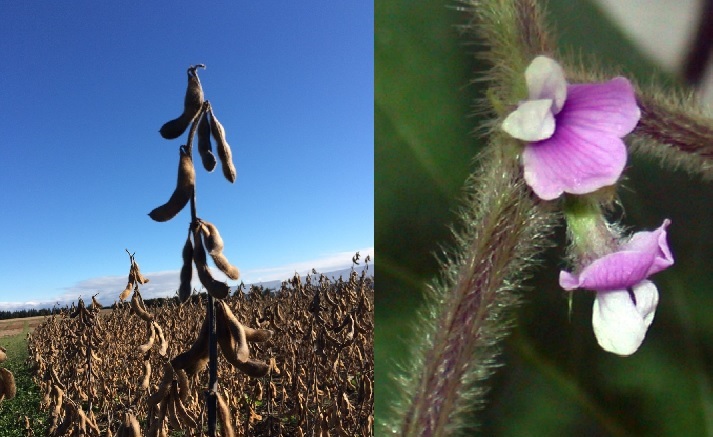Istvan Rajcan

Email:
Phone:
Education:
B.Sc. (Agr.) University of Novi Sad;
Ph.D. University of Guelph
Location:
Room:

Courses:
Relevant Links:
Selected Publications:
Istaitieh, M., Yoosefzadeh Najafabadi, M., Edwards, M., Todd, J., Van Acker, R., and I. Rajcan.2023. Genetic Study for Seed Germination and Shattering in Euphorbia lagascae in Response to Different Seed Treatments. In revision. Vol.10, Issue 7, 15 April 2024, e27975. https://doi.org/10.1016/j.heliyon.2024.e27975(link is external)
Yoosefzadeh Najafabadi, M., Heidari, A. and Rajcan, I. 2023. AllInOne Pre-processing: A comprehensive preprocessing framework in plant field phenotyping. SoftwareX, Volume 23, 2023. https://doi.org/10.1016/j.softx.2023.101464(link is external)
Yoosefzadeh-Najafabadi, M., Singh, K.D., Pourreza, A., Sandhu, K.S., Adak, A., Murray, S.C., Eskandari, M. and I. Rajcan. 2023. Remote and Proximal Sensing: How Far Has It Come to Help Plant Breeders? In press. Advances in Agronomy. https://doi.org/10.1016/bs.agron.2023.05.004(link is external)
Yoosefzadeh Najafabadi, M.; Hesami, M.; Rajcan, I. 2023. Unveiling the Mysteries of Non-Mendelian Heredity in Plant Breeding. Plants 2023, 12, 1956. https://doi.org/10.3390/plants12101956(link is external)
Rajsic, P., Gray, R., Weersink, A., and I. Rajcan. 2023. Are There Adequate Incentives for Research and Innovation in the Plant Breeding Supply Chain? IntechOpen, Agricultural Value Chains - Some Selected Issues, Editor John. Stanton. DOI: 10.5772/intechopen.110347
Ficht, A., Konkin, D., Cram, D., Sidebottom, C. Tan, Y. Pozniak, C. and I. Rajcan. 2023. Genomic selection for agronomic traits in a winter wheat breeding program. Theor. Appl. Gen. (2023) 136:38. https://doi.org/10.1007/s00122-023-04294-1(link is external)
Yoosefzadeh-Najafabadi, M. and I. Rajcan. 2023. Six decades of soybean breeding in Ontario, Canada: a tradition of innovation. Can. J. of Plant Sc., 103(4):333-352. https://doi.org/10.1139/cjps-2022-0183(link is external)
Buerstmayr, H., Dreccer, M.F., Miladinović, M., Qiu, L., Rajcan, I., Reif, J., Varshney, R.K., and Vollmann, J. 2022. Plant breeding for increased sustainability: challenges, opportunities and progress. Theor. Appl. Genetics 135:3679–3683. https://doi.org/10.1007/s00122-022-04238-1(link is external)
Boyle, T., Najafabadi,M. Y., & Rajcan, I. (2023). Comparative assessment of early season soybean cultivars in organic and conventional production system for morphological and agronomic traits. Crop Science,63,227–247. https://doi.org/10.1002/csc2.20864(link is external)
Gebre, M.G., Rajcan, I. and Earl, H.J. 2022. Genetic variation for effects of drought stress on yield formation traits among commercial soybean [Glycine max (L.) Merr.] cultivars adapted to Ontario, Canada. Front. Plant Sci. 13: 1020944.doi: 10.3389/fpls.2022.1020944
Hong, H., Yoosefzadeh Najafabadi, M. Torkamaneh, D., and Rajcan, I. 2022. Identification of quantitative trait loci associated with seed quality traits between Canadian and Ukrainian mega-environments using genome-wide association study. Accepted for publication in Theor. Appl. Genet. 135(7): 2515-2530.doi:10.1007/s00122-022-04134-8.
Priyanatha, C, and I. Rajcan. 2022. Phenotypic evaluation of Canadian x Chinese germplasm in a diversity panel for seed yield and seed quality traits. Can. J. Plant Sc. 102: 1032–1039. dx.doi.org/10.1139/CJPS-2022-0016.
Ficht, A., Bruce, R., Torkamaneh, D., Grainger, C.M, Eskandari, M., and I. Rajcan. 2022. Genetic analysis of sucrose concentration in soybean seeds using a historical soybean genomic panel. Theor Appl Genet 135: 1375–1383. https://doi.org/10.1007/s00122-022-04040-z(link is external)
Yoosefzadeh-Najafabadi, M., Eskandari, M., Torabi, S., Torkamaneh, D.; Tulpan, D., Rajcan, I. 2022. Machine-Learning-Based Genome-Wide Association Studies for Uncovering QTL Underlying Soybean Yield and Its Components. Int. J. Mol. Sci. 2022, 23, 5538.https://doi.org/10.3390/ijms23105538(link is external)
Belzile F, Jean M, Torkamaneh D, Tardivel A, Lemay M-A, Boudhrioua C, Arsenault-Labrecque G, Dussault-Benoit C, Lebreton A, de Ronne M, Tremblay V, Labbé C, O’Donoughue L, St-Amour V-TB, Copley T, Fortier E, Ste-Croix DT, Mimee B, Cober E, Rajcan I, Warkentin T, Gagnon É, Legay S, Auclair J and Bélanger R. 2022. The SoyaGen Project: Putting Genomics to Work for Soybean Breeders. Front. Plant Sci. 13:887553. doi: 10.3389/fpls.2022.887553
Khatri, P., Wally, O., Rajcan, I and S. Dhaubhadel. 2022. Comprehensive Analysis of Cytochrome P450 Monooxygenases Reveals Insight into Their Role in Partial Resistance Against Phytophthora sojae in Soybean. Front. Plant Sci. 13:862314.doi: 10.3389/fpls.2022.862314
Priyanatha C, Torkamaneh D and Rajcan I. 2022. Genome-Wide Association Study of Soybean Germplasm Derived From Canadian × Chinese Crosses to Mine for Novel Alleles to Improve Seed Yield and Seed Quality Traits. Front. Plant Sci. 13:866300.doi: 10.3389/fpls.2022.866300
Nitrogen Fixation in Soybean Is Subject to Drift or Selection Over 100 Years of Soybean Breeding. Front. Agron. 3:725813. doi: 10.3389/fagro.2021.725813
Isaac ME, Nimmo V, Gaudin ACM, Leptin A, Schmidt JE, Kallenbach CM, Martin A, Entz M, Carkner M, Rajcan I, Boyle TD and Lu X. 2021. Crop Domestication, Root Trait Syndromes, and Soil Nutrient Acquisition in Organic Agroecosystems: A Systematic Review. Front. Sustain. Food Syst. 5:716480. doi:10.3389/fsufs.2021.716480
Bruce, R.W., Rajcan, I., and J. Sulik. 2021. Classification of soybean pubescence from multispectral aerial imagery. Published online on August 4, 2021. Plant Phenomics: https://doi.org/10.34133/2021/9806201(link is external
Kumar, V., Vats, S., Kumawat, S., Bisht, A., Bhatt, V., Shivaraj, S.M., Padalkar, G.G., Goyal, V., Zargar, S., Gupta, S., Kumawat, G., Chandra, S., Chalam, V.C., Ratnaparkhe, M.B., Gill, B.S., Jean, M., Patil, G.B., Vuong, T., Rajcan, I., Deshmukh, R., Belzile, F., Sharma, T.R., Nguyen, H.T., and H. Sonah.2021. Omics advances and integrative approaches for the simultaneous improvement of seed oil and protein content in soybean (Glycine max L.). Critical Rev. Plant Sci. Published online August 10, 2021. https://doi.org/10.1080/07352689.2021.1954778(link is external)
Hemingway, J, Schnebly, SR, and I. Rajcan. 2021. Accuracy of genomic prediction for seed oil concentration in high-oleic soybean populations using a low-density marker panel. Crop Science 61:4012–4021.https://doi.org/10.1002/csc2.20607(link is external)
Jean, M., Cober, E., O’Donoughue, L., Rajcan, I. and F. Belzile. 2021. Improvement of key agronomical traits in soybean through genomic prediction of superior crosses. Crop Sci 61:3908–3918. https://doi.org/10.1002/csc2.20583(link is external)
Bruce, R.W., Torkamaneh, D., Grainger, C.M., Belzile, F., Eskandari, M. and I. Rajcan. 2020. Haplotype diversity underlying quantitative traits in Canadian soybean breeding Germplasm. Theor. Appl. Genetics 133:1967–1976.
Bruce, R.W., Rajcan, I. and J. Sulik. 2020. Plot extraction from aerial imagery: a precision agriculture approach. Plant Phenome, Vol. 1(2). Published online on March 9, 2020. https://doi.org/10.1002/ppj2.20000(link is external).
Bilyeu, K., Škrabišová, M., Allen, D., Rajcan, I., Palmquist, D.E., Gillen, A., Mian, R., and H. Jo. 2018. The interaction of the soybean seed high oleic acid oil trait with other fatty acid modifications. J. Am. Oil Chem. Soc. 95: 39–49.
MacDonell, E.C., and I. Rajcan. 2018. Identification of Quantitative Trait Loci Associated with Soyasaponin I Concentration in Soybean Seed. Accepted with revisions. Theoretical and Applied Genetics, 131:2157–2165.
Shaw, E.J. and I. Rajcan. (2017). Molecular Mapping of Soybean Seed Tocopherols in the cross OAC Bayfield x OAC Shire. Plant Breeding. 136: 83-93.
McClure, K.A., K.M. Gardner, P.M.A. Toivonen, C.R. Hampson, J. Song, C.F. Forney, J. DeLong, I. Rajcan and S. Myles. (2016). QTL Analysis of Soft Scald in Two Apple Populations. Horticulture Research (Nature). 3: 16043. DOI:10.1038/hortres.2016.43(link is external)
Hemingway, J., M. Eskandari and I. Rajcan. (2015). Genetic and Environmental Effects on Fatty Acid Composition in Soybeans with Potential Use in Automotive Industry. Crop Science. 51: 1-11.
McNaughton, A.J.M., B.J. Shelp and I. Rajcan. (2015). Impact of temperature on the expression of Kennedy Pathway genes in developing soybean seeds. Canadian Journal of Plant Science. 95: 87-101.
Sonah, H., L. O’Donoughue, E. Cober, I. Rajcan and F. Belzile. (2014). Identification of Loci Governing Eight Agronomic Traits using a GBS-GWAS Approach and Validation by QTL Mapping in Soybean. Plant Biotechnology Journal. 2: 211-21.DOI: 10.1111/pbi.12249(link is external).
Gillman, J.D., A. Tetlow, K. Hagely, J.G. Boersma, A. Cardinal, I. Rajcan and K. Bilyeu. (2014). Identification of the molecular genetic basis of the low palmitic acid seed oil trait in soybean mutant line RG3 and association analysis of molecular markers with elevated seed stearic acid and reduced seed palmitic acid. Molecular Breeding. 34: 447-455
Lee, R.W.H., I.T. Malchev, I. Rajcan and L.S. Kott. (2014). Identification of putative quantitative trait loci associated with a flavonoid compound related to resistance to cabbage seedpod weevil (Ceutorhynchus obstrictus) in a canola genotype derived from an interspecific cross, Sinapis alba x Brassica napus. Theoretical and Applied Genetics. 127: 419-428.
Grainger, C.M. and I. Rajcan. (2014). Characterization of the Genetic Changes in a Multi-Generational Pedigree of an Elite Canadian Soybean Cultivar. Theoretical and Applied Genetics. 127: 211-229.
Eskandari, M., E.R. Cober and I. Rajcan. (2013). Using the Candidate Gene Approach for Detecting Genes Underlying Seed Oil Concentration and Yield in Soybean. Theoretical and Applied Genetics. 126: 1839-1850.
Eskandari, M., E.R. Cober and I. Rajcan. (2013). Genetic control of soybean seed oil: I. QTL and genes associated with seed oil concentration in RIL populations derived from crossing moderately high oil parents. Theoretical and Applied Genetics. 126: 483-495.
Rossi, M.E., J.H. Orf, L.J. Liu, Z. Dong and I. Rajcan. (2013). Soybean Adaptation to North American vs. Asian Mega-environments as revealed by two Canadian x Chinese populations: I. Yield QTL. Theoretical and Applied Genetics. 126: 1809-1823.
Boersma J.G., G.R. Ablett, C. Grainger, J.D. Gillman, K.D. Bilyeu and I. Rajcan. (2012). New mutations in a delta-9-stearoyl-ACP desaturase gene associated with enhanced stearic acid levels in soybean seed. Crop Science. 52: 1736–1742.
Palomeque, L., L.J. Liu, W. Li, B. Hedges, E.R. Cober and I. Rajcan. (2009). QTL in mega-environments: I. Universal and specific seed yield QTL detected in a population derived from a cross of high-yielding adapted x high-yielding exotic soybean lines. Theoretical and Applied Genetics. 119: 417-427.
Winter, S.M.J., T. Anderson, T. Welacky and I. Rajcan. (2007). QTL associated with horizontal resistance to soybean cyst nematode in Glycine soja PI 464925B. Theoretical and Applied Genetics. 114: 461-472.
Primomo, V.S., D.E. Falk, G.R. Ablett, J.W. Tanner and I. Rajcan. (2002). Genotype-Environment Interactions, Stability and Agronomic Performance of Soybeans with Altered Fatty Acid Profiles. Crop Science. 42: 31-36.
Yan, W. and I. Rajcan. (2002). Biplot Evaluation of Test Locations and Trait Relations for Breeding Superior Soybean Cultivars in Ontario. Crop Science. 42: 11-20.